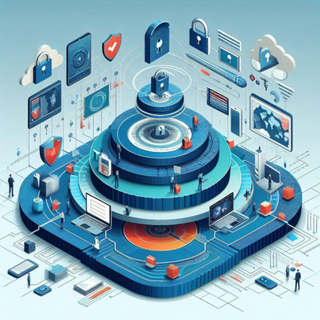Multi-Factor Authentication (MFA) vs. Two-Factor Authentication (2FA)
In today's digital landscape, securing online accounts and sensitive information is more important than ever. Two common methods employed to bolster security are Multi-Factor Authentication (MFA) and Two-Factor Authentication (2FA). While both strategies aim to provide enhanced protection by requiring additional verification steps beyond a simple password, they differ in their approach and level of security. This article looks into the distinctions between MFA and 2FA, exploring their respective implementations, use cases, and the scenarios in which each method is most effective. Understanding these differences is crucial for making informed decisions about the best authentication strategy for your specific needs.

Differences
Multi-Factor Authentication (MFA) and Two-Factor Authentication (2FA) are both methods used to enhance security by requiring users to provide additional forms of verification beyond just a password. Here's how they differ:
Two-Factor Authentication (2FA):
- 2FA requires users to provide two forms of verification from two different categories of credentials.
- These categories are typically "something you know" (like a password or PIN) and "something you have" (like a smartphone or a physical token).
- Common implementations of 2FA include receiving a code via SMS, using a one-time password (OTP) generator app, or inserting a physical security key.
- 2FA provides an additional layer of security compared to using just a password but is less secure than MFA since it only requires two factors for authentication.
Multi-Factor Authentication (MFA):
- MFA, on the other hand, goes beyond two factors and requires users to provide multiple forms of verification from two or more categories of credentials.
- These additional categories might include "something you are" (like biometric data such as fingerprints or facial recognition) or "somewhere you are" (like location-based authentication).
- MFA offers greater security compared to 2FA because it requires more than two factors for authentication, making it harder for attackers to gain unauthorized access.
- However, MFA may also introduce more complexity for users and can sometimes be more inconvenient.
Use Cases
When considering the implementation of authentication methods, understanding the distinct use cases for Two-Factor Authentication (2FA) and Multi-Factor Authentication (MFA) is crucial. Here are some general guidelines:
Two-Factor Authentication (2FA):
- 2FA is suitable for most scenarios where you want to add an extra layer of security to account logins without introducing too much complexity.
- It's widely used and strikes a balance between security and usability.
- Suitable for most consumer applications, online banking, email accounts, and other services where sensitive information is stored.
- Effective in business environments where remote access to company resources is common.
Multi-Factor Authentication (MFA):
- MFA is recommended for environments where a higher level of security is required, such as corporate networks, sensitive databases, or financial systems.
- It's particularly valuable for protecting highly sensitive data or critical infrastructure.
- While it may be more complex and potentially cumbersome for users, the increased security it provides outweighs the inconvenience, especially in high-risk scenarios.
In summary, the choice between 2FA and MFA depends on the level of security required for a particular system or environment. For most general applications, 2FA provides a good balance of security and usability, while MFA is recommended for situations where enhanced security measures are necessary.


